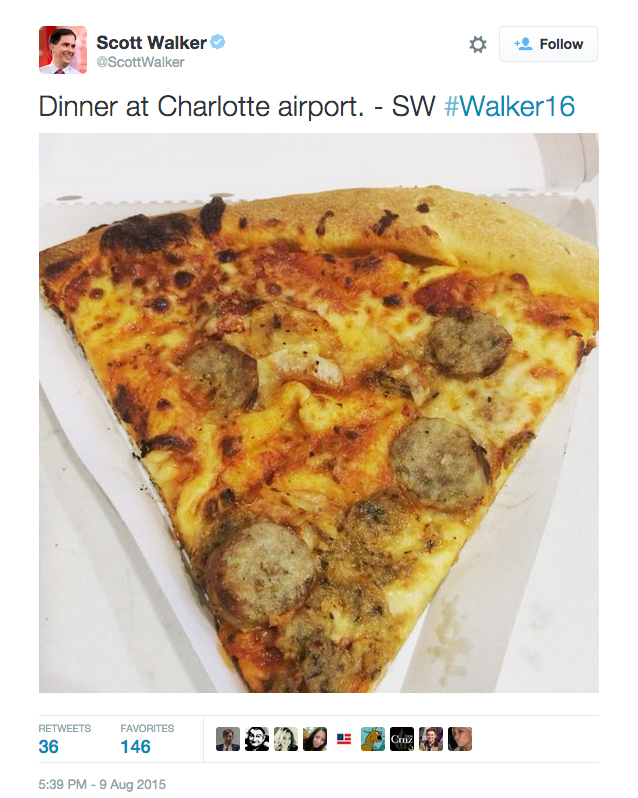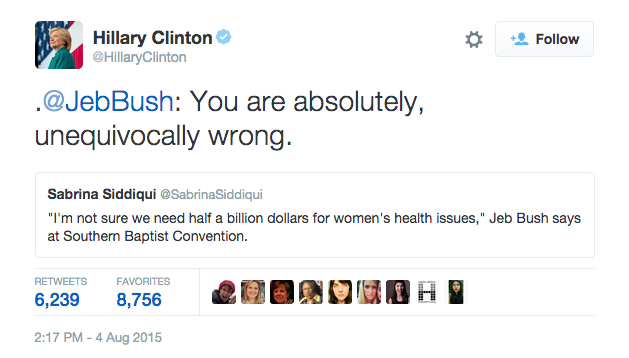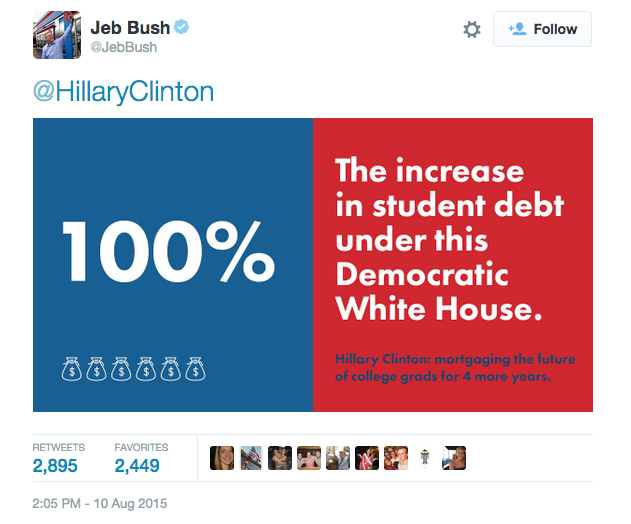Social Media – Think most everyone saw this coming.

Social media is driving the 2016 presidential race, as candidates of both parties increasingly view Facebook, Twitter and Instagram as key battlegrounds in the fight for the White House.
Campaigns have used social media in past elections. But in recent months, it has threatened to overtake traditional news outlets, paid advertising and the campaign stump as the top venue for candidates to rally voters, hit their rivals — and even make news.
And those best able to harness the power of social media are showing they can use it to generate the most buzz.
The Bernie Sanders campaign has parlayed the liberal senator’s formidable social media presence and a #feeltheBern hashtag into record attendance at rallies around the country.
When Donald Trump fires off a late-night Twitter tirade, it shows up in the feeds of more than 3.7 million followers.
“I think one of the most interesting things this year is that it’s no longer a question of if candidates should be using these platforms, it’s how and how often,” said Erin Lindsay, a principal for digital at Precision Strategies, a consulting firm founded by veterans of Obama’s 2012 reelection campaign.
In recent days, social media has even doubled as a virtual debate stage, with candidates sparring in a manner inconceivable just a few election cycles ago.
When former Florida Gov. Jeb Bush (R) said at a conservative forum, “I’m not sure we need half a billion dollars for women’s health issues,” Clinton’s team pounced. “.@JebBush: You are absolutely, unequivocally wrong,” her account said, retweeting a reporter who had covered Bush’s remarks.
The two tangled again on Twitter this week. When Clinton sent out a graphic detailing the amount of student debt held by Americans, Bush’s campaign sent back with a similar image slamming what they called a 100 percent increase in student debt during the Obama presidency.
The beef was on. “Fixed it for you,” Clinton responded, having modified the graphic to read “F. The grade given to Florida for college affordability under Jeb Bush’s leadership.”
Bush then posted a version of Clinton’s campaign logo — the letter “H” where the bar in the middle has been replaced by a right-facing arrow — with the arrow pointed up and the rest of the “H” was comprised of the word “taxes,” repeated over and over.
Interactions like that can make news. “Hillary Clinton and Jeb Bush Are Having a Photoshop Battle on Twitter,” AdWeek declared; “Jeb Bush and Hillary Clinton Got into a Twitter Fight” saidVanity Fair; and Wired went as far as to call the back-and-forth an “Epic Photoshop Battle.”
Campaign aides also use their own accounts to respond to rival staffers and reporters who write stories they disagree with.
Just as frequently, candidates are using social media to connect with and energize their supporters.
Sometimes, that takes the form of a glimpse into a candidate’s life: Bush posted a picture to Instagram recently of a tortoise on a lawn at the Reagan Library. Sen. Marco Rubio (R-Fla.) gave supporters an inside look at his announcement via Snapchat. And Wisconsin Gov. Scott Walker (R) has made a habit of posting pictures of his unglamorous meals, including a slice of sausage pizza in the Charlotte, N.C., airport.

Strategists say that candidates are most successful when they customize their message to each individual platform and can respond swiftly.
“I think depending on the platform you’re on, you need to be either more playful or clever,” said Marie Danzig, the global head of creative and delivery for Blue State Digital and a former Obama campaign staffer. “You need to operate more quickly on Twitter than you do on Facebook. I think Snapchat and Periscope will continue to become more of the norm in terms of providing behind-the-scenes content.”
Clinton’s campaign has been particularly aggressive about finding novel ways to engage with her supporters. Her Instagram account likes photos that mention the campaign and, earlier this year, her Facebook account left a supportive comment under a photo from the popular blog Humans of New York that purported to show a young boy distraught that he would not be accepted because he was gay. Signed with an “-H,” it received over 94,000 “likes.”
“It forces candidates to show more personality,” said Lindsay. “Authenticity is a big thing in social media. I think the candidates that are the most successful are the ones that are clearly the most comfortable.” Teddy Goff, one of the co-founders of Precision, also works as a senior adviser to Hillary Clinton on digital communications.
This strategy has its limits. In a piece addressing politicians’ social media presences more broadly, BuzzFeed News’s politics editor Katherine Miller said that Clinton’s “tweets often evoke an elaborate pasteurization process, wherein aides calculate what needs to be said (topic) with the maximal amount of safety (substance, tone).”
Danzig said that “there is a little bit of risk of fatigue” when candidates are taking shots at one another on social media.
But the continued rise of social media in presidential politics is, in many ways, a case of candidates meeting supporters where they have their conversations. A Pew survey released this year found that in 2014, 71 percent of online adults used Facebook, 26 percent used Instagram and 23 percent used Twitter.
Since 2012’s election, the number of mature, major social media networks has grown — with platforms such as Pinterest and Snapchat growing in popularity. As Americans continue to make using social media a part of their routines, candidates are as well.
“It’s become much more interactive, less about your posting your own beliefs in your own feed,” said Danzig. “So I think we are seeing the candidates wake up to that and make sure that they’re having more of a conversation rather than using it as a PR channel.”
By David McCabe
Original POST


